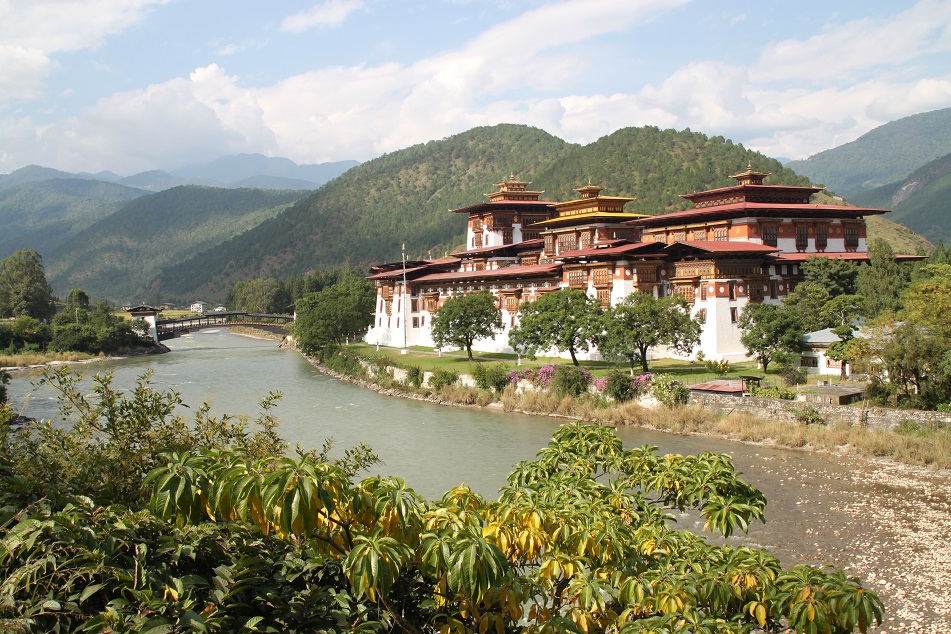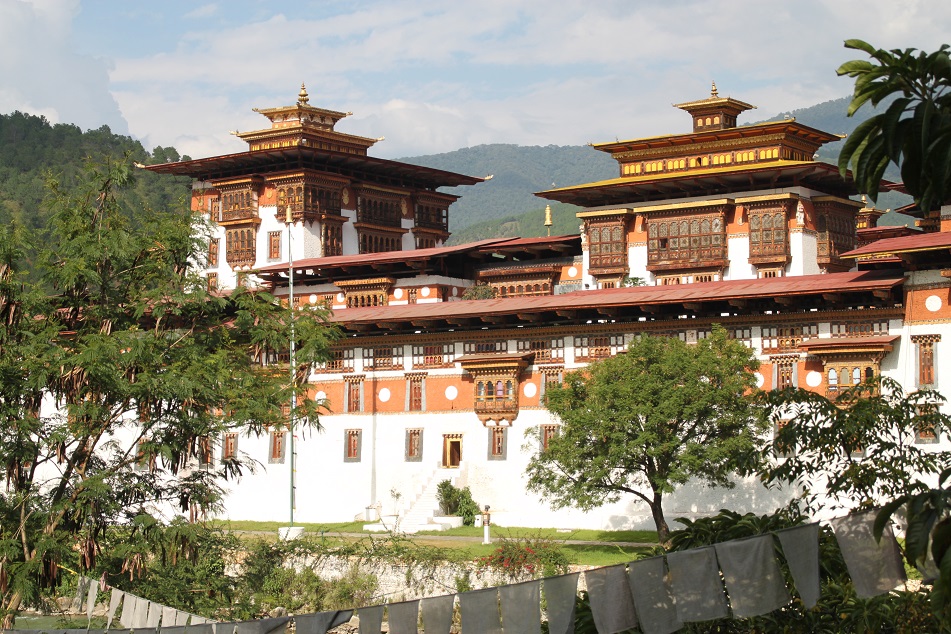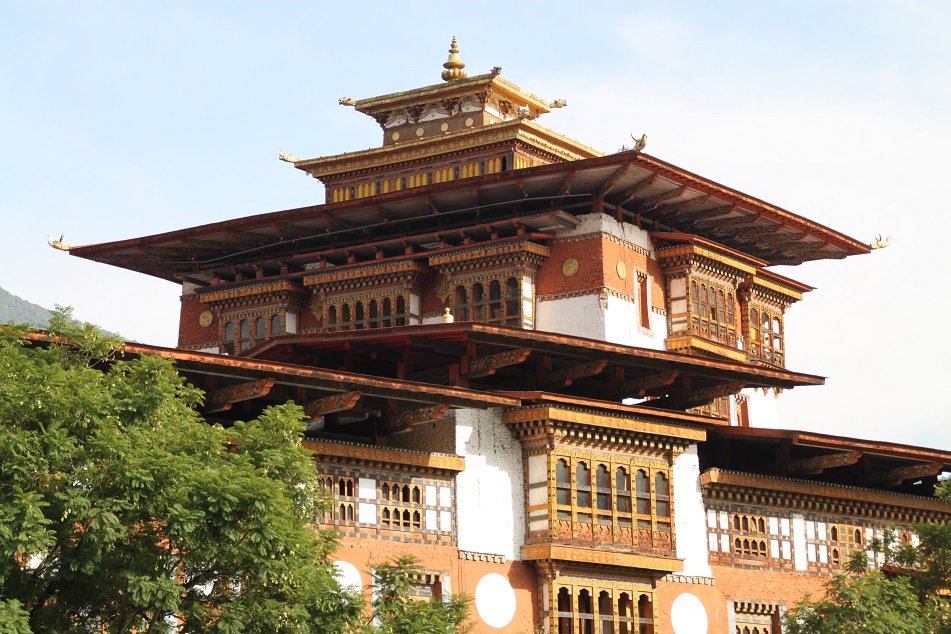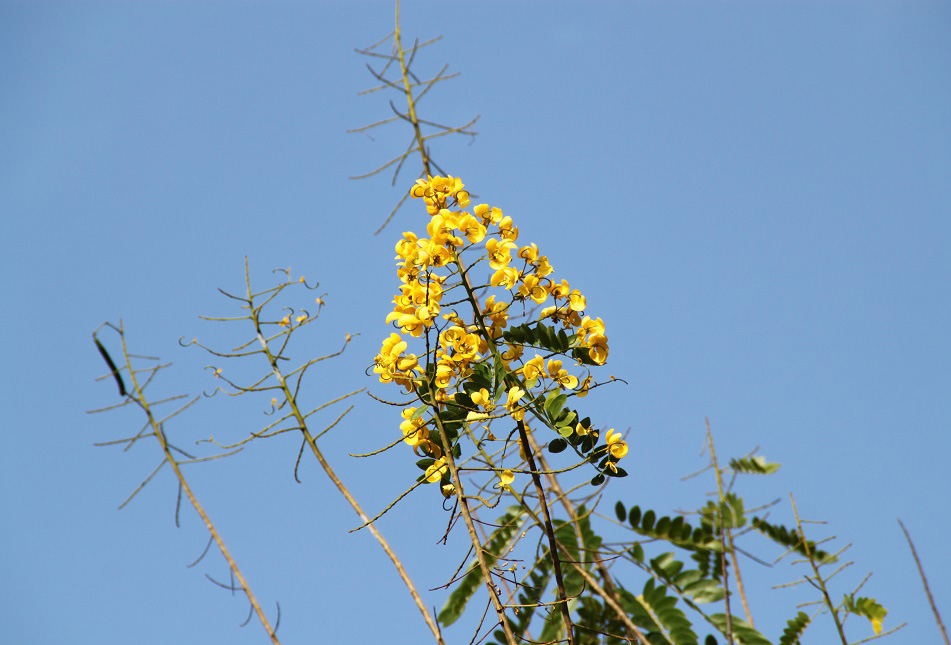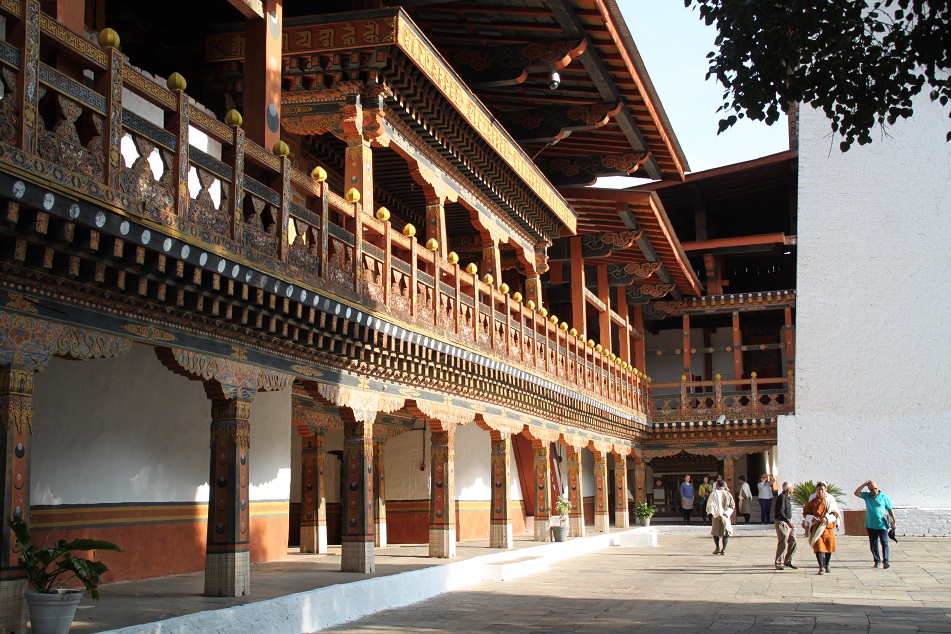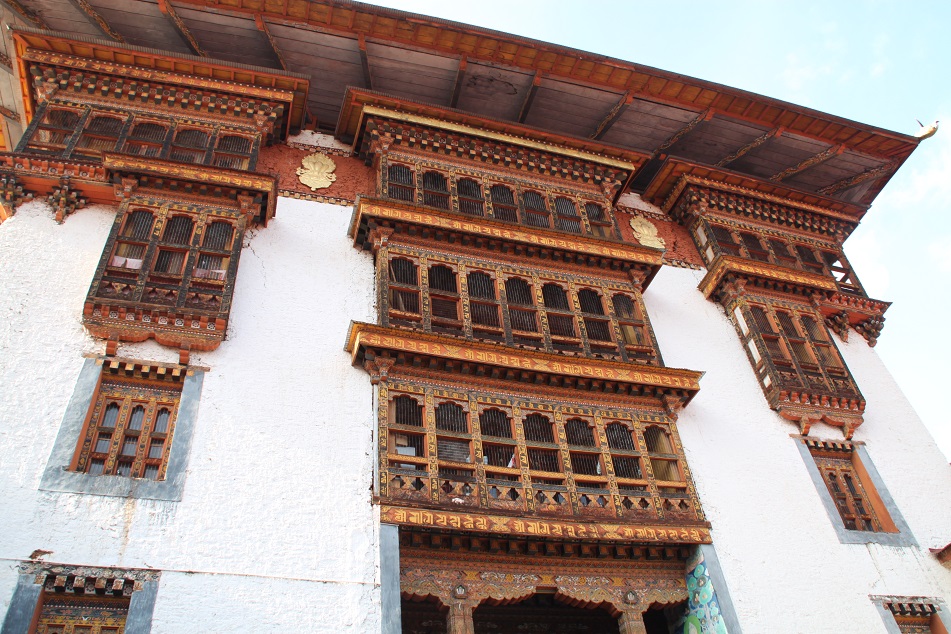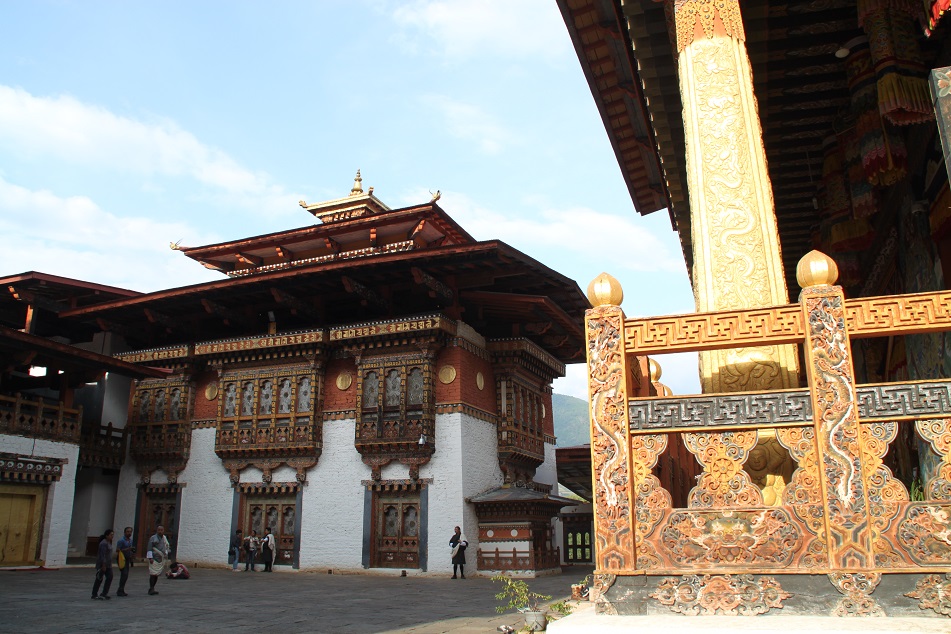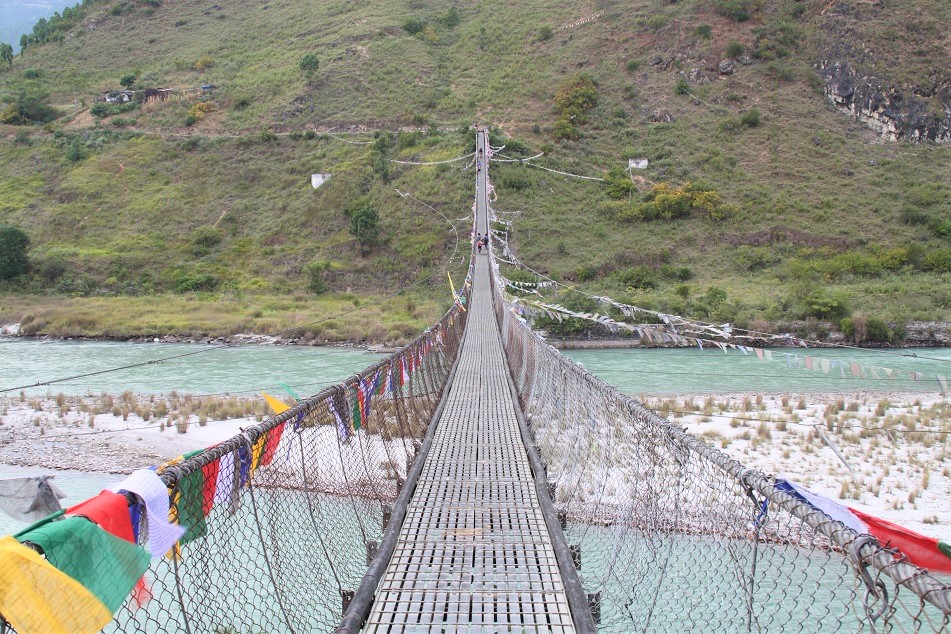On the morning of our second day in Punakha Valley, we looked up to the sky before leaving our hotel; the sun was mostly obstructed by grey clouds, although it wasn’t as windy as the day before.
“There’s a cyclone in the Bay of Bengal,” Kinga informed us. He himself looked worried that the weather would disappoint us that day.
Off we went to the outskirts of Punakha where, as Kinga had told us earlier, we would do some hiking to “a temple on a hill”. Navigating his way down snaking roads that followed the contours of the mountainous terrain of Bhutan, Phuntsho took us to the starting point of the hike less than an hour after we left our riverside accommodation. From the road above the valley, the spectacular view of verdant hills that framed rice terraces with ripening paddies, probably days away from being harvested, was a feast for the eyes. I have seen countless rice terraces, but this was among the most picturesque and majestic examples I had ever set my eyes on.
The clouds were slowly dissipating, allowing the sun to shine over the fertile valley. From the parking area Kinga led us to a small suspension bridge over the Mo Chhu (mother river) where we encountered a dog walking toward us from the opposite direction; it had probably crossed this iron bridge so many times before. Little did I know the photo I took of the dog with Kinga far ahead of us was in fact the last image my camera yielded before it started acting up a few minutes later.
As we were treading the dirt path across the yellowish rice paddies, I was tempted to capture the beauty with my camera. As I pressed the shutter button halfway, suddenly the camera frenetically took several photos in one go, and before I could quite fathom what on earth was happening it took some more random images, this time even without me pressing anything. Why does this have to happen right now, when we’re in the middle of this beautiful place? I couldn’t help but feel a little frustrated.
We continued walking uphill until we found a small shaded pavilion where I asked Kinga if we could stop briefly there so I could check my camera.
“Don’t worry, take your time,” our ever-accommodating guide assured me.
I frantically started inspecting one button after another, going through each function in the settings menu to find out what went wrong with my camera, but the problem persisted. James empathetically tried to offer help, also to no avail. In the end I tried to work with the manual focus, hoping I could still get photos that wouldn’t end up being too blurry.
It was hot and humid in this valley, not surprising since Punakha itself is located 1,200 meters above sea level, more than 1,100 meters lower than the capital Thimphu. And with a camera that seemed to be having its own mind, the morning heat felt even more oppressing causing me to sweat profusely. We kept on walking, and as soon as we left the paddy fields we entered the shaded pathway of the hill crowned by the temple Kinga had told us of.
Before long, we arrived at the gate to Khamsum Yulley Namgyal Chorten, a multi-story chorten (also known as stupa) constructed in 2004 and ornately decorated with Bhutanese traditional architectural elements. Just like in other Buddhist temples in the country, Kinga reminded us not to take any pictures inside the chorten. We took off our shoes and climbed the steps to the entrance of the chorten, and as we walked through the half-opened doorway we were welcomed by an explosion of colors that is synonymous with the branch of Buddhism practiced in Bhutan. Kinga explained to us aspects of the religion signified by the larger-than-life statues, as well as those depicted as finely-painted murals, before going up to the upper levels of the structure.
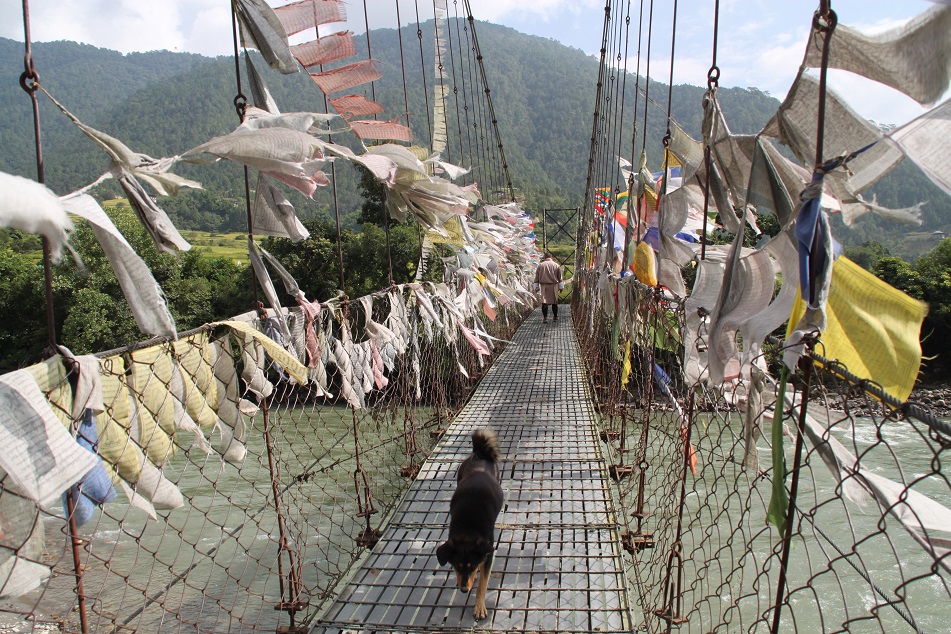
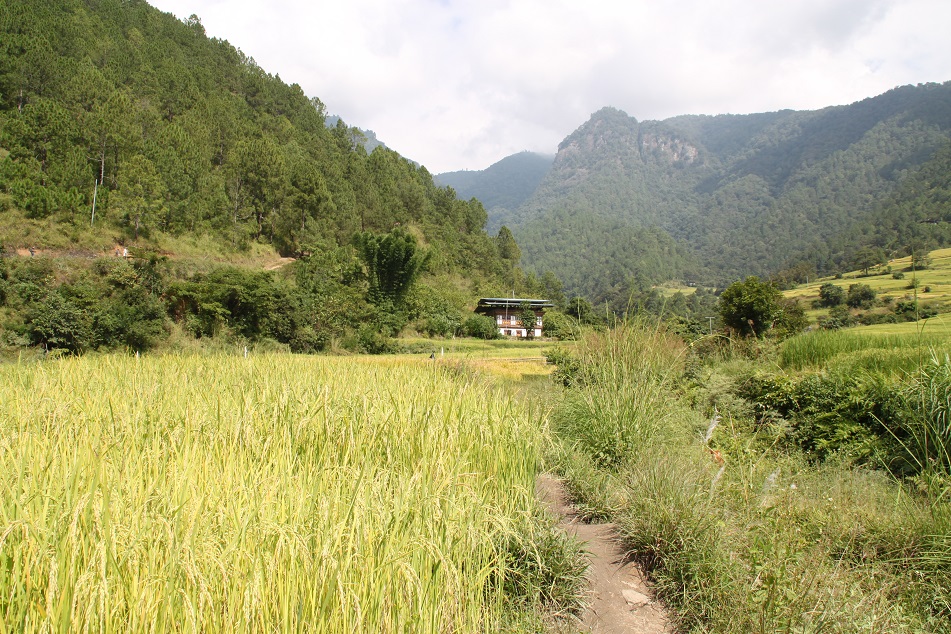
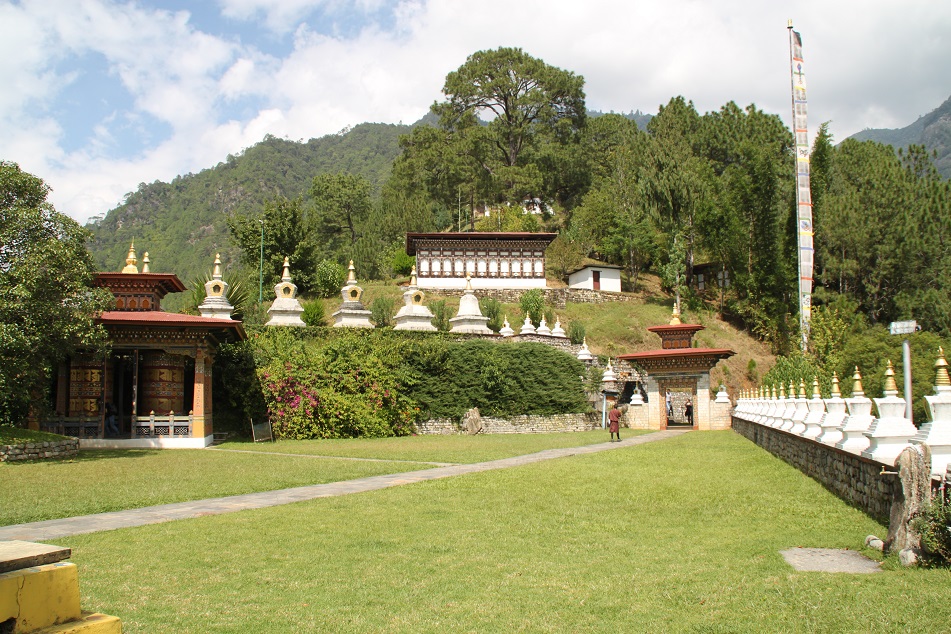
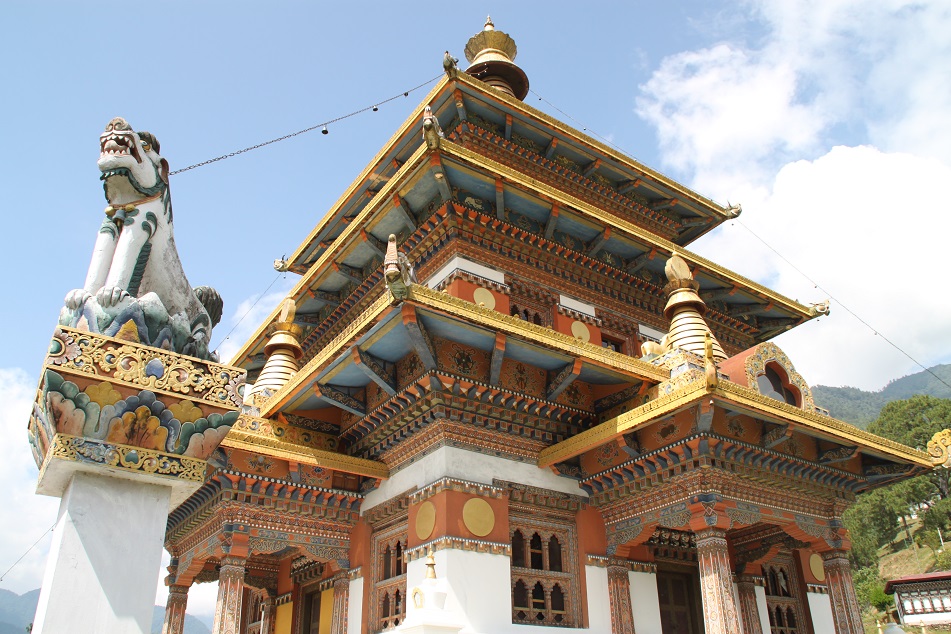
On the top level, the magnificent 360° view of the lush valley with pristine forests and a tapestry of rice paddies dotted with farmhouses was not only beautiful, but also soothing for the senses. Meandering across this vista of abundance is the Mo Chhu which originates from the heights of the Himalayas. It is unsurprising that some of the international resort chains that entered Bhutan chose this location to build their properties despite its relative isolation. We lingered on the chorten’s open-air rooftop platform to marvel at the majestic landscape as well as to breathe in as much fresh air as we could, for the latter is a luxury in the teeming metropolis called Jakarta where we live.
After many deep inhalations, we finally signaled to Kinga that we were ready to go down. On the way back to where Phuntsho parked the car, Kinga bought us a few green guavas from an old man who was patiently waiting for hikers to buy fruits from him.
“Let’s have lunch now, and after that we will go to Punakha Dzong,” Kinga said.
We headed to the town of Khuruthang where we had our first Bhutanese momo (a type of dumpling popular in the Himalayan region) the day before. This time we tried a different restaurant which happened to be larger and brighter than the first. Having tasted the vegetarian momo – each translucent parcel filled with a generous amount of local cheese – we opted for the non-veg variety and ordered a few ones with non-meat filling as well for comparison. However, as much as we love meat, it turned out that we preferred the non-vegetarian momo better for its creamier cheese filling. Kinga also introduced us to bathup, a hearty Bhutanese noodle soup with dried beef and a taste of Sichuan peppercorn known for its distinctive numbing sensation in the mouth. Outside the restaurant, a handful of glass jars filled with pickled chili peppers were exposed to the sun. Phuntsho told us that the local people do that in preparation for winter when fresh vegetables, including chilies, are hard to find.
With full stomachs we were ready to make the most of the sunny afternoon, and in Punakha that meant visiting the valley’s most iconic landmark: Punakha Dzong. A dzong is a type of fortress-like structure found in Bhutan which houses temples, government offices as well as a monastery. Typically built on top of a hill or a ridge to afford a sweeping view of the surrounding valley so that any threat or invading forces (mainly from Tibet) could be detected early, today a dzong is usually both the secular and religious center of an administrative unit in the country. Of all such structures, arguably the most famous is Punakha Dzong which, unlike others, is located at the confluence of the Pho Chhu and Mo Chhu as opposed to higher ground.
Completed in the year 1638, Punakha Dzong was designed with three courtyards – a departure from the traditional two-courtyard design found across Bhutan – and adorned with fine wood carvings and intricate artworks. Even though it is not the biggest dzong in the country, according to many people it is Bhutan’s most beautiful, which is unsurprising since Punakha was in fact the kingdom’s capital until the seat of the government was moved to Thimphu in 1955. Nevertheless, in modern Bhutan Punakha remains important as its dzong serves as the winter residence of the chief abbot of the Dratshang Lhentshog, Bhutan’s Central Monastic Body.

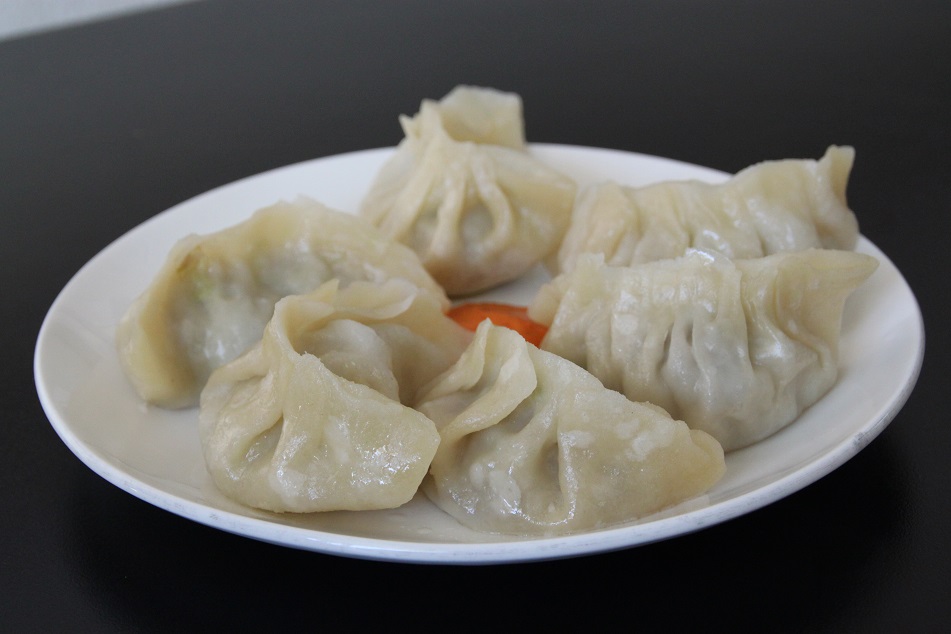
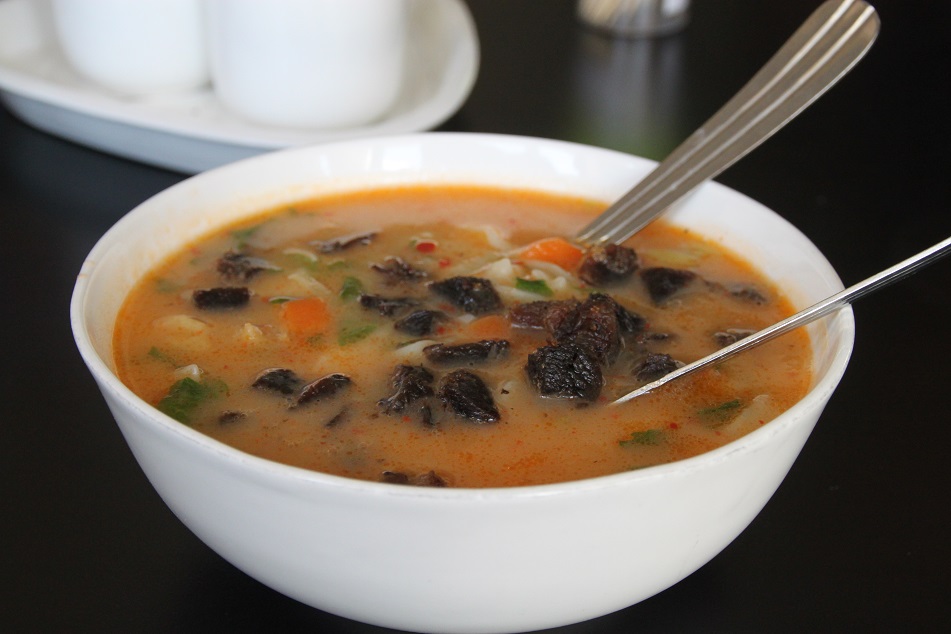
After taking too many photos of the dzong’s exterior – its wooden windows, tiered roofs, and gleaming pinnacles were just too beautiful in the afternoon sun – James and I finally followed Kinga’s lead to enter the fortress. We climbed a series of steps – first made of stones, and subsequently of wood – then walked through the northern entrance to arrive at the first courtyard with a big tree at its center. The roofs, the rafters, the corridors, the utse (central tower), really every corner of this part of the dzong was so photogenic any image would not truly do it justice.
Then through narrow and dimly-lit walkways we proceeded to the second courtyard. From this side a scar was visible on the utse’s upper section, a result of the brute force of nature that shook this part of the world seven years ago.
“It was caused by the 2011 earthquake,” Kinga told us, and later I learned that the epicenter was actually in Sikkim, an Indian state nestled between Bhutan and Nepal.
As a matter of fact, Punakha Dzong has sustained damage from flooding, fires, and of course, earthquakes that have ravaged this otherwise tranquil corner of Bhutan for more than three centuries. However, every time a part of the dzong is destroyed, it is also a chance for Bhutan’s most talented artisans to contribute to the preservation of the symbol of their unique culture. Kinga told us that it took hundreds of the best woodcarvers from all over the country to rebuild the main temple inside the dzong following the latest natural disaster.
That main temple Kinga was talking about is located at the third courtyard, on the southeastern end of the compound. As per tradition we took off our shoes before entering the temple, and my goodness! Grandeur and opulence were on an entirely different level in this place.
“This is even more ornate than the Forbidden City,” James expressed his amazement by comparing the lavish interior of the temple with the famous palace in the Chinese capital which itself is already a prime example of grand architectural design.
We followed Kinga, circumambulating the pillared hall of the temple, trying to listen to his explanation about what we were seeing while at the same time being astonished by the sheer beauty found above our heads and all around us. One will certainly feel humbled standing inside this precious architectural wonder crafted by Bhutanese hands, and to me the place exuded not only a sense of power, but also passion and dedication of the people who have been and will always be safeguarding their centuries-old traditions. It was at Punakha Dzong that the first king of Bhutan from the Wangchuck dynasty was crowned in 1907, and the last major event that took place in this impressive compound was the wedding of the current king in 2011.
I left the dzong feeling humbled, and it seemed that the amount of beauty the valley had presented to our eyes that day inspired us to embrace more “Bhutanness”: we were intrigued to try on the gho, the traditional male costume in the country which is worn by all men, young and old. That night Kinga and Phuntsho took us out of town for dinner, and they were kind enough to lend their gho to us. In the town of Wangdue Phodrang, James and I were wearing it, while our trusted guide and driver looked so different in their jeans. I noticed most of the locals had already swapped their gho and kira (women’s traditional dress) for modern-looking outfits.
“So at night you’re free to wear anything you want?” I asked Phuntsho, curious. “Yes, we can wear jeans, t-shirts, anything,” he replied.
Apparently our effort to appear more like the locals ended up making us look even more like tourists. Nevertheless, it was fun, and the gho was in fact quite a comfortable outfit, although I imagine when the temperature drops it can get cold down there (think of a kilt). And speaking of colder weather, the following day we would leave the warmth of Punakha Valley and head back to the higher altitudes of the west, without wearing a gho.
